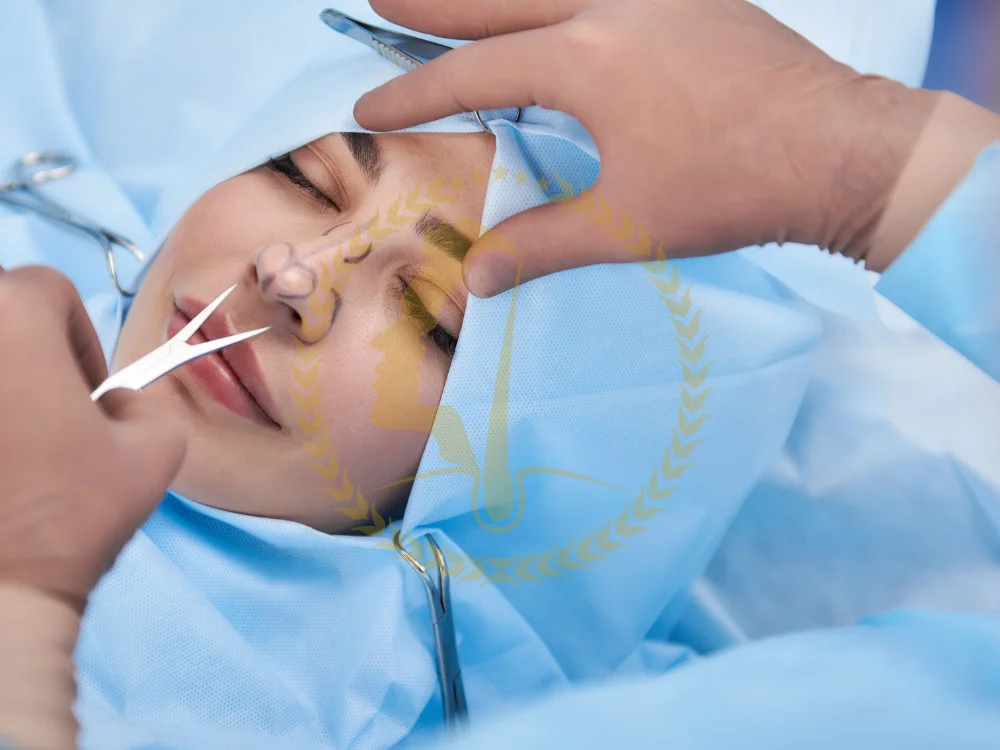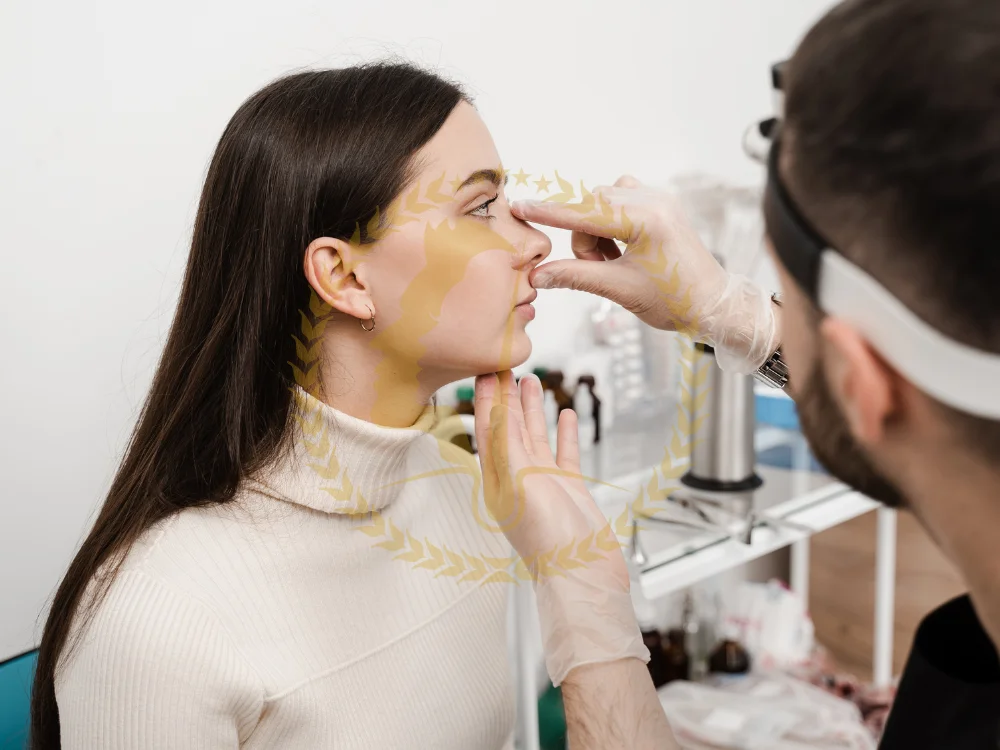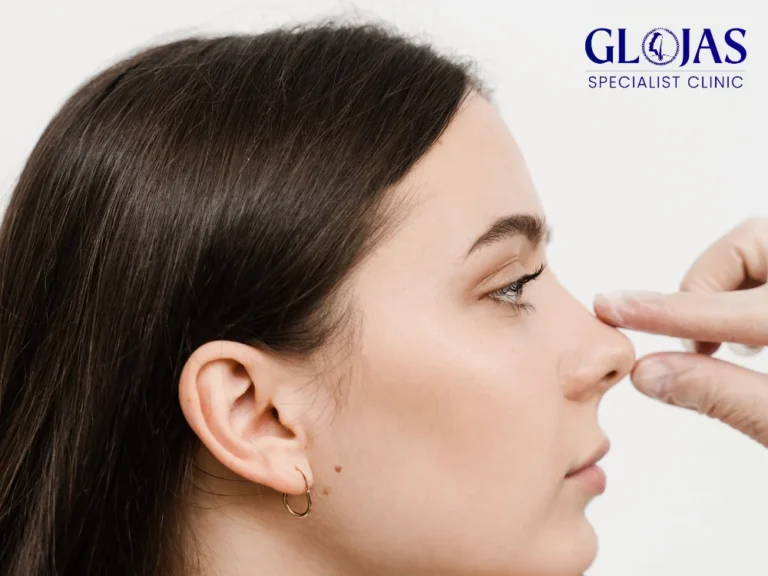For many individuals, the appearance of their nose plays a significant role in how they perceive their overall facial balance. Whether it’s due to genetics, injury, or simply personal preference, nose shaping can provide a solution for those seeking to enhance the symmetry and aesthetic of their nose. In this guide, we’ll explore the benefits of nose shaping, the different methods available, and what to expect from the procedure.
What is Nose Shaping?
Nose shaping, also known as rhinoplasty, is a surgical or non-surgical procedure aimed at altering the shape, size, or structure of the nose to improve its appearance or function. Whether you’re looking to correct a deviated septum, smooth out a bump, or refine the nose tip, nose shaping can help achieve a more balanced and harmonious facial look.
Both cosmetic and medical reasons can lead individuals to opt for nose shaping, and today’s advanced techniques ensure that the procedure is safer and more effective than ever before.

5 Key Benefits of Nose Shaping
1. Improves Facial Symmetry
One of the primary reasons people seek out nose shaping is to achieve better facial symmetry. The nose is central to the face, and even minor alterations can have a dramatic effect on overall facial balance.
For example, individuals with wide noses, bumps on the nasal bridge, or asymmetrical nostrils can benefit from procedures designed to create a more proportionate and aesthetically pleasing nose. Skilled surgeons tailor each procedure to the patient’s specific facial structure, ensuring a natural and harmonious result.
2. Boosts Confidence and Self-Esteem
Feeling self-conscious about the appearance of your nose can affect your confidence and how you present yourself in both social and professional situations. Nose shaping can significantly improve a person’s self-esteem by creating a nose that aligns with their personal aesthetic goals.
Patients often report feeling more comfortable in their own skin and experience a boost in self-confidence after the procedure. This psychological benefit often extends beyond appearance and enhances one’s overall well-being.
3. Corrects Breathing Issues
For some individuals, nose shaping is not just about aesthetics—it’s about improving functionality. Structural issues like a deviated septum or nasal polyps can cause breathing difficulties, snoring, and sleep problems. Rhinoplasty can correct these issues, allowing for better airflow and an overall improvement in breathing.
By addressing these medical concerns, nose shaping offers both cosmetic and functional benefits, improving quality of life for those affected by nasal obstructions.
4. Customizable and Tailored to Individual Needs
One of the most appealing aspects of nose shaping is the ability to customize the procedure to fit each individual’s unique goals. No two noses are the same, and a one-size-fits-all approach doesn’t work when it comes to rhinoplasty.
Whether you’re looking to refine the nose tip, narrow the bridge, or adjust the angle between the nose and upper lip, a skilled surgeon can create a personalized plan that addresses your specific concerns. This customization ensures that the final results are natural and tailored to your facial features.
5. Long-Lasting Results
While non-surgical cosmetic procedures typically offer temporary results, surgical nose shaping (rhinoplasty) provides long-lasting outcomes. Once the nose has healed and the swelling has subsided, the results are permanent.
This longevity makes nose shaping a worthwhile investment for individuals who want a permanent solution to their cosmetic or functional concerns. With proper care and attention, the benefits of rhinoplasty can last a lifetime, requiring no further touch-ups or adjustments.
Surgical vs. Non-Surgical Nose Shaping: What’s the Difference?
When it comes to nose shaping, there are both surgical and non-surgical options available. Each method has its own advantages, and the right choice depends on your goals and expectations.
Surgical Nose Shaping (Rhinoplasty)
Rhinoplasty is a surgical procedure that permanently reshapes the nose by altering the underlying bone and cartilage. It can address a wide range of issues, including size reduction, bump removal, or correcting structural deformities.
- Pros: Permanent results, highly customizable, can correct both cosmetic and medical issues.
- Cons: Longer recovery time (usually 1 to 2 weeks), risk of complications, higher cost.
Non-Surgical Nose Shaping (Liquid Rhinoplasty)
Non-surgical nose shaping, often referred to as a liquid rhinoplasty, uses injectable fillers like hyaluronic acid to reshape the nose temporarily. This option is ideal for individuals looking for minor adjustments, such as smoothing out bumps or refining the nose tip, without the need for surgery.
- Pros: Quick procedure, no downtime, reversible results.
- Cons: Temporary (results last 6 to 12 months), limited to minor adjustments, cannot address structural issues.

The Nose Shaping Procedure: What to Expect
Understanding the nose shaping process can help alleviate concerns and provide clarity about what to expect. Below is a general outline of both surgical and non-surgical procedures.
Consultation
The first step in any nose shaping procedure is a consultation with a qualified surgeon or cosmetic professional. During this meeting, you’ll discuss your goals, review your medical history, and undergo a thorough examination of your nose and facial features.
Your surgeon will help determine whether you’re a good candidate for rhinoplasty or non-surgical treatments and provide recommendations for the best approach.
Surgical Rhinoplasty Procedure
For surgical rhinoplasty, the procedure is typically performed under general anesthesia. The surgeon makes small incisions, often inside the nostrils, to access the nasal bones and cartilage. They will then reshape the nose to achieve the desired results, whether that involves reducing its size, removing bumps, or correcting asymmetry.
The surgery usually takes between 1 to 3 hours, depending on the complexity of the case. After surgery, the patient will wear a splint to protect the nose and help maintain its new shape during the healing process.
Non-Surgical Liquid Rhinoplasty Procedure
Non-surgical nose shaping is much quicker, usually lasting between 15 to 30 minutes. A cosmetic professional will inject fillers into specific areas of the nose to achieve the desired contour. There’s minimal discomfort, and the procedure doesn’t require anesthesia, although a numbing cream may be applied.
Recovery from liquid rhinoplasty is almost immediate, and patients can typically return to their daily activities the same day.
Recovery and Aftercare
Surgical Rhinoplasty Recovery
Recovery from surgical rhinoplasty typically takes 1 to 2 weeks. During this period, patients will experience swelling and bruising, especially around the eyes. The nasal splint is usually removed after a week, and the majority of the swelling subsides within a month. However, it can take up to a year for the nose to fully settle into its new shape.
Non-Surgical Nose Shaping Recovery
For non-surgical rhinoplasty, the recovery process is minimal. There may be slight swelling or redness at the injection sites, but these side effects generally resolve within a few days. Unlike surgical rhinoplasty, non-surgical patients can resume normal activities almost immediately.

FAQs on Nose Shaping
1. How much does nose shaping cost?
The cost of nose shaping varies depending on the method chosen. Surgical rhinoplasty typically ranges from $5,000 to $15,000, while non-surgical rhinoplasty costs between $600 and $2,500 per session.
2. Is nose shaping painful?
For surgical rhinoplasty, patients are under anesthesia and do not feel pain during the procedure. There is some discomfort during recovery, but pain can be managed with prescribed medications. Non-surgical rhinoplasty is generally painless, with most patients reporting minimal discomfort.
3. How long do the results of nose shaping last?
Surgical rhinoplasty results are permanent, while non-surgical results typically last 6 to 12 months, depending on the type of filler used.
4. Am I a good candidate for nose shaping?
You may be a good candidate for nose shaping if you are in good health, have realistic expectations, and are looking to improve the appearance or function of your nose. A consultation with a qualified professional will help determine the best approach for your specific needs.
5. What is the difference between rhinoplasty and septoplasty?
While rhinoplasty focuses on improving the appearance of the nose, septoplasty is a procedure designed to correct a deviated septum and improve breathing.
6. Can I combine nose shaping with other procedures?
Yes, many patients choose to combine nose shaping with other facial procedures, such as chin augmentation or eyelid surgery, to achieve a more balanced and harmonious appearance.
In conclusion, nose shaping is a highly customizable procedure that offers both aesthetic and functional benefits. Whether you’re seeking to enhance your facial symmetry, boost confidence, or improve breathing, nose shaping can provide life-changing results tailored to your unique goals.
